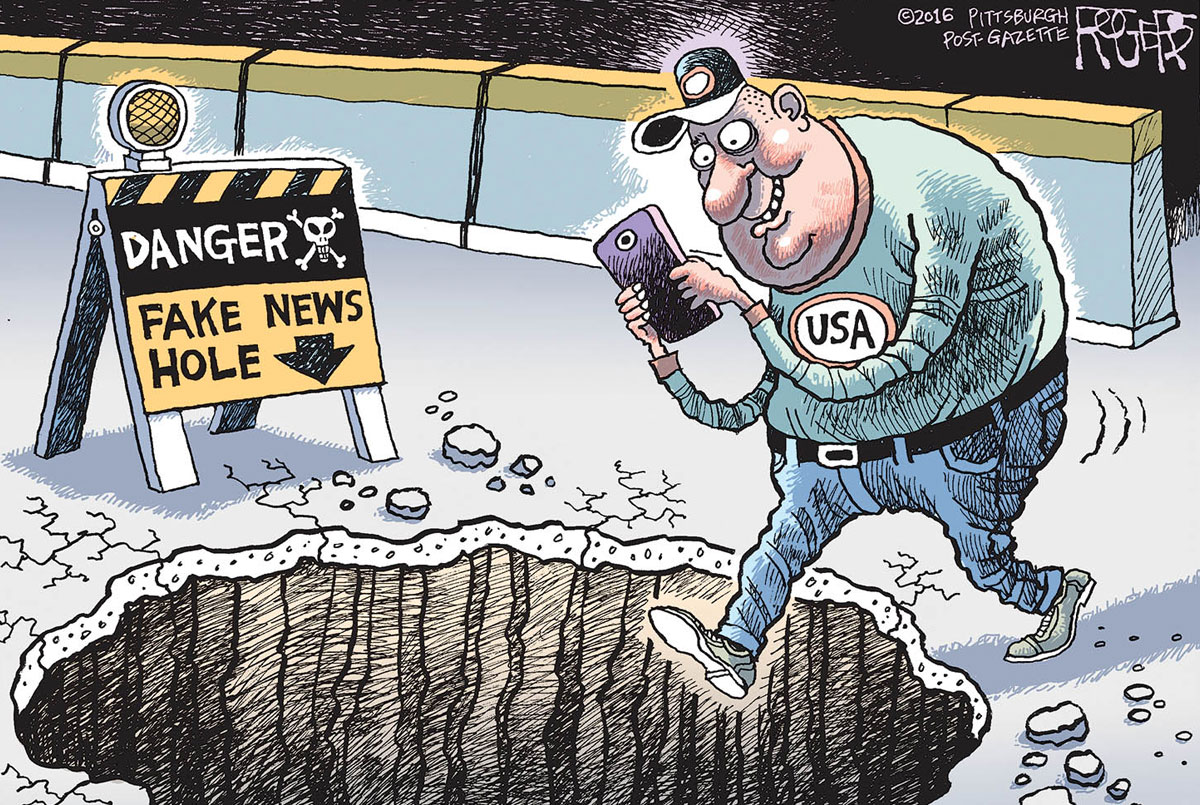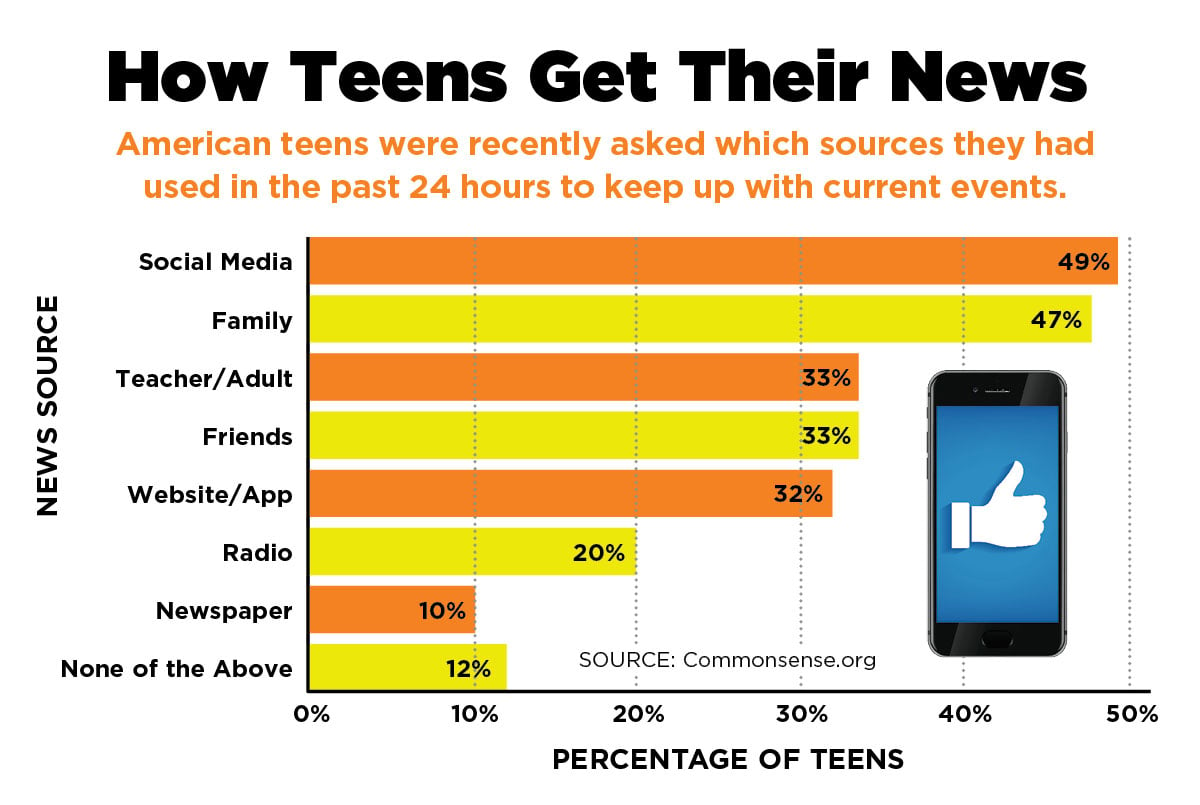Fighting Fake News
Made-up stories are taking over the internet. Are tech companies doing enough to stop the spread?

As this cartoon illustrates, fake news isn’t always easy to spot, even when there are warning signs.

Last fall, news broke about a new law banning students from reciting the Pledge of Allegiance in schools. The story quickly went viral. More than 2 million Facebook users shared or commented on it.
The problem? The report was made-up, published on a fake news website, then given a huge audience on the top social media platform.
The episode highlighted the problem of fake news. Misinformation published online often spreads faster than it can be challenged. The more that bogus stories are shared and viewed, the higher they’re likely to be ranked by Google and other search engines. That makes them easier to find—and increases people’s sense that they might be true.
“Just because something is in the top five of your search results doesn’t mean it’s reliable,” says Jonathan Anzalone of the Center for News Literacy at Stony Brook University in New York.
Fake news may be made-up, but it can have real effects. For example, some experts say fake news stories may have influenced the 2016 U.S. presidential election. Since then, tech companies have come under fire for not doing enough about the phony stories.
Now Google and Facebook—among people’s top sources for fake news—are rolling out strategies to combat it. But will that be enough?
FACT-CHECKING FAKE NEWS
Google recently announced plans to minimize the reach of fake news in its searches. The tech giant has assigned more than 10,000 employees to electronically flag articles containing misleading information. This ensures those stories will rank lower in Google search results and users can see that the articles contain highly suspect or false information.
For example, a recent fake news story claimed that 300,000 pounds of rat meat was being sold as chicken wings across the United States. That story is now tagged as false. In addition, a link directs users to a fact-check of the article by the nonpartisan site PolitiFact.com.
Facebook, meanwhile, launched its own fact-checking tool—and is working to delete phony accounts run by bots (web robots) that spread fake news. Facebook has also tried a low-tech approach: Before recent elections in Great Britain, the company placed ads in local newspapers about how to spot fake news.


WEAK SOLUTIONS?
But some experts say the tech companies’ efforts aren’t likely to be very effective in stopping false info.
One big issue: Fact-checking individual articles takes too much time to slow fast-spreading fake news, says Matthew A. Baum, a public policy professor at Harvard University in Massachusetts. Instead, he says, internet platforms should evaluate websites as a whole. Any content from a site that regularly publishes false stories should rank low in search results lists.
Companies should also be more aggressive about deleting fake accounts, Baum says. Facebook recently deleted 30,000 such accounts, but in 2013, the company said it could have as many as 138 million phony accounts.
EDUCATING READERS
For now, the best way to stop fake news may be educating people to be skeptical about what they read (see “Don’t Fall for Fake News!”). To that end, several states are weighing legislation that would encourage public schools to offer
The classes teach students how to analyze information from websites, TV, and other forms of media. They can also help students recognize their own biases, says Anzalone.
“We don’t like to receive information that may conflict with what we believe,” he says. So when you read something that affirms what you think—even if it’s wrong—you’re more likely to accept it. That’s why people need to think critically about what they’re reading, he adds.
The end goal is about more than being able to spot a made-up story, according to Anzalone. “It’s about valuing and seeking truth—and knowing how to find it.”
CORE QUESTION: Should tech companies be responsible for eliminating fake news? Explain.
Don’t Fall for Fake News!
Dig deeper.
Just because a story pops up first on Google doesn’t mean it’s trustworthy. Look at the descriptions of multiple results before deciding which one to click.
Check the source.
If a story comes from an unfamiliar website, click on the “About” page to learn more about the site. Searching a site’s name or its founder’s name on the web can help you learn even more about it.
Don’t share.
Spotted a fake news story? Avoid sending it to your friends or reposting it. Sharing bogus stories only widens their audience—and helps them rise even higher in search results.

